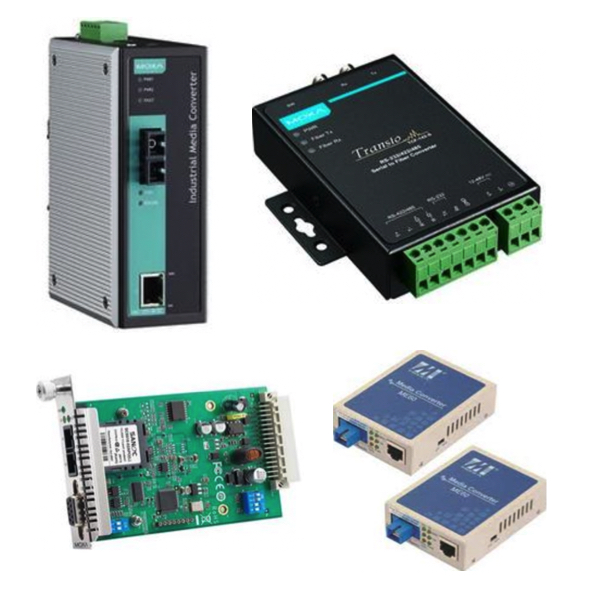Network Media Converters

Network media converters are essential devices that enable the seamless integration of various cabling types within a network, such as converting copper cabling to fiber optic connections. These converters are vital in extending network reach and improving performance over longer distances, particularly where fiber optic cabling is required for high bandwidth or remote locations. Mini media converters, often utilized in tight spaces, and chassis-based media converters, designed for larger networks, are common types. They support various fiber types, including single mode and multi mode, ensuring compatibility with existing fiber infrastructure and facilitating easy expansion.
Industrial media converters are built to withstand harsh environmental conditions, making them suitable for demanding industrial applications. Managed media converters offer advanced monitoring and configuration options, allowing for better control over data rates, protocols, and network management. Ethernet media converters, such as gigabit Ethernet and fast Ethernet converters, help bridge the gap between copper and fiber networks, supporting protocols like VoIP and ensuring reliable communication across the network. The flexibility provided by these converters ensures that network devices can communicate effectively regardless of the cabling medium.
More Information about Network Media Converters
By enabling seamless transitions between copper and fiber cabling, network media converters contribute to the longevity and scalability of network infrastructure. They provide a cost-effective solution for extending network reach, ensuring that data can travel over longer distances without signal degradation. Features like plug-and-play installation, multiple connection options, and support for different fiber types and wavelengths make these converters ideal for both small-scale and large-scale networking applications. Whether in an enterprise environment or a remote industrial setting, media converters play a pivotal role in ensuring robust and reliable network connectivity.
FAQs
Do fiber media converters connect to fiber ports in existing cabling infrastructure in order to connect to a local area network?
Yes, fiber media converters connect to fiber ports within existing cabling infrastructure to facilitate seamless integration with a local area network (LAN).
Does a PoE media converter utilize fiber links and copper ports in network cabling?
Yes, a PoE media converter utilizes fiber links for data transmission and copper ports to deliver power and data over network cabling to connected devices.
Serial Communication Basics
Serial communication sends data sequentially over a computer bus or communication cable one bit at a time. Parallel communication sends data simultaneously over multiple communication lines in a single bus or cable multiple bits at a time. While it may seem that parallel communication would be the preferred method, this is not always the case. Because of the increased complexity of data transmission in parallel communication, serial communication can provide faster speeds. The speed of serial communication can be altered by adjusting the BOD rate, which increases the number of the bits transmitted per second.
Two of the most common standards that have been created to take advantage of serial based communication in the industrial space are RS 232 and RS 485. RS 232 standard used to be very common, however it had lower transmission speeds, short maximum cable lengths and large voltage swings, making it useful only in certain situations. RS 485 is an improved standard that is still found in many applications today. It fixed many of the issues the RS 232 standard had by providing higher transmission speeds, longer cable lengths and other improvements that increased its usability and performance.

